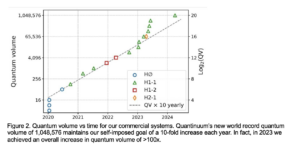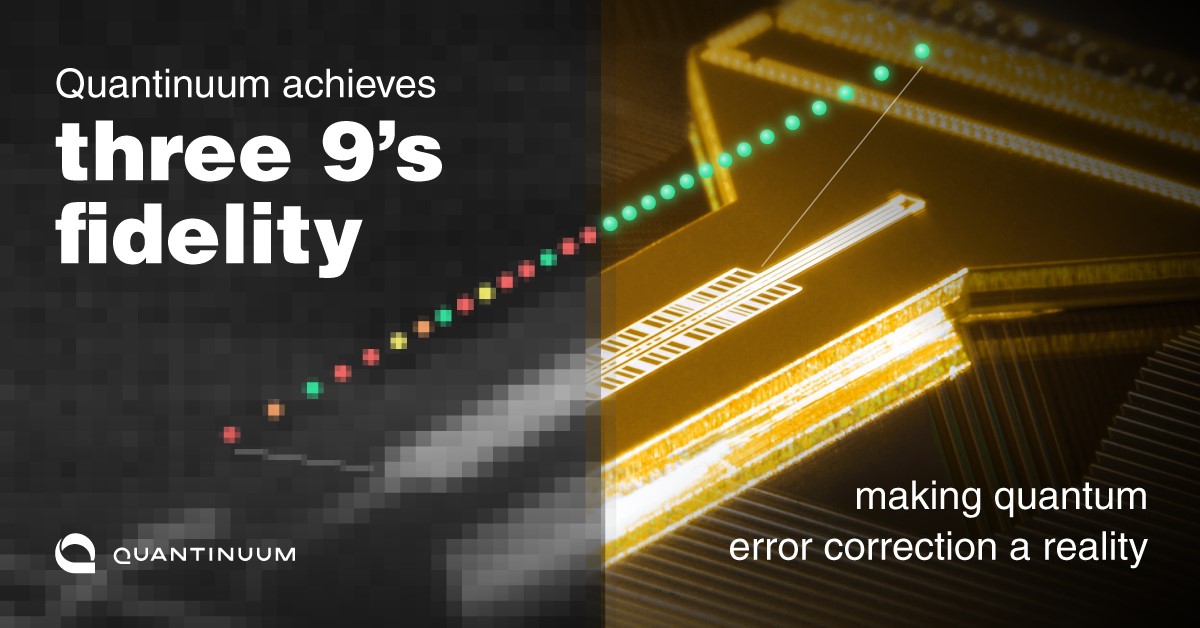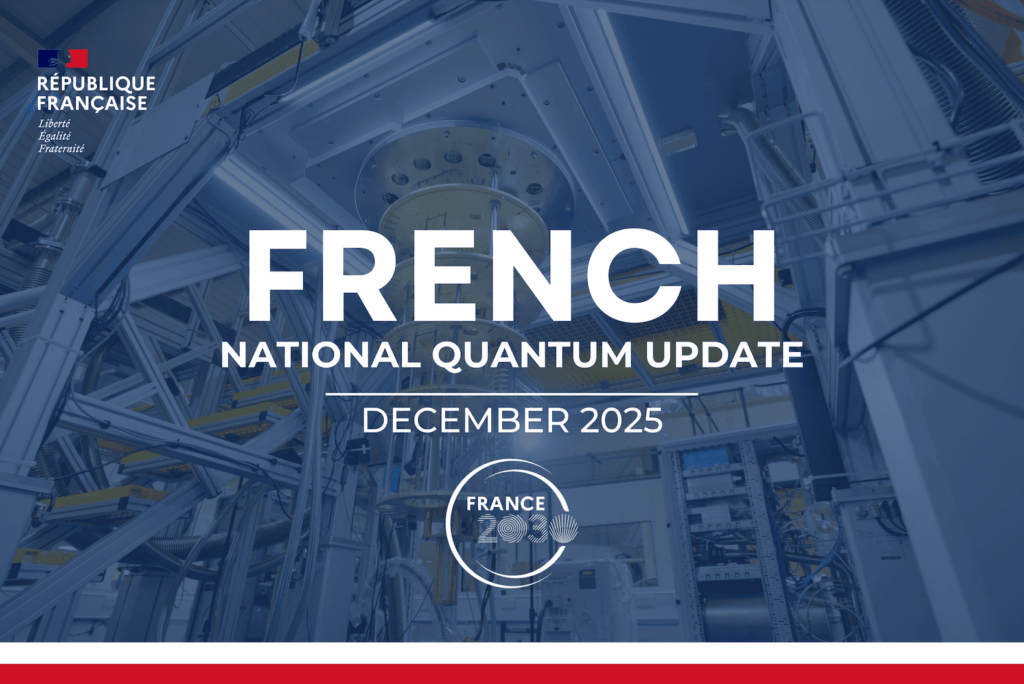Insider Brief
- Quantinuum announced that its ion trap quantum computer is the first commercial quantum computer to reach a 2-qubit gate fidelity of 99.914(3)%.
- “Three Nines” is a term scientists use to describe a device that reaches a level of fidelity for quantum operations or quantum gates that are correct with a probability of 99.9%.
- Quantinuum also announced that its Quantum Volume has reached 1,048,576, also referred to as 2^20.
If quantum computing was bowling, Quantinuum just rolled another strike. In fact, this spring — when you include advances in quantum volume, logical qubits and the wiring problem — the team has come close to bowling a perfect game.
Fresh off its participation in impressive logical qubit work, Quantinuum now announces in a blog post that its ion trap quantum computer is the first commercial quantum computer to reach a 2-qubit gate fidelity of 99.914(3)%. Scientists refer to this feat as the “three nines” threshold — which means a level of fidelity for quantum operations or quantum gates that are correct with a probability of 99.9%.
The company adds in the post that Quantum Volume (QV), which has become recognized as a key benchmark for quantum computing performance, has now surpassed one million – exponentially higher than its nearest competitors.

Delivering on these benchmarks isn’t an academic exercise, it’s critical to establishing the confidence and trust necessary to build the entire quantum computing industry, Ilyas Khan, founder and chief product officer at Quantinuum, told The Quantum Insider.
“We have long known that the quantum computing industry and the entire ecosystem, from suppliers to end customers, require three things,” said Khan. “Firstly, they require transparency and consistency about timelines and commercial applications. Secondly, they need certainty in terms of roadmaps. Thirdly, they need to have standards for benchmarking – knowing that qubit numbers are simply one of many metrics that determine computability. At Quantinuum, we underscore all our work with certainty. We give ourselves tough timelines but then we also meet them. We provide full disclosure about our work and our claims. And we ensure that all of our work can potentially benefit the ecosystem.”
Quantum error correction, arguably the main challenges for building reliable and scalable quantum computers, depends on the underlying hardware achieving high enough fidelity. If the physical qubit operations have too many errors, the error-correcting code can amplify rather than diminish the overall error rates, rendering the system unusable for practical applications.
“Reaching this level of physical fidelity is not optional for commercial-scale computers – it is essential for error correction to work, and that in turn is a necessary foundation for any useful quantum computer,” the company stated in a press release.
According to the Quantinuum scientists, for decades, the industry has been striving to reach this milestone for years. And there’s a good reason for that. Crossing this threshold is considered a crucial tipping point between today’s noisy intermediate-scale quantum (NISQ) computers and ushering in tomorrow’s fault-tolerant devices.
They write: “For decades now, it has been hoped that one day a quantum computer would achieve “three nines” – an iconic 99.9% 2-qubit gate fidelity – at which point many of the error-correcting codes required for universal fault tolerant quantum computing would successfully be able to squeeze errors out of the system.”

Quantinuum’s achievement is a significant step towards realizing the full potential of quantum computing. The company’s H Series quantum computers have now demonstrated repeatable performance across all qubit pairs, a feat that distinguishes this announcement from one-off laboratory demonstrations.
“Getting to three 9’s in the QCCD architecture means that ~1000 entangling operations can be done before an error occurs. Our quantum computers are right at the edge of being able to do computations at the physical level that are beyond the reach of classical computers, which would occur somewhere between 3 nines and 4 nines. Some tasks become hard for classical computers before this regime (e.g. Google’s random circuit sampling problem) but this new regime allows for much less contrived problems to be solved. At that point, these machines become real tools for new discoveries – albeit they will still be limited in what they can probe, likely to be physics simulations or closely related problems,” said Dave Hayes, a Senior R&D manager at Quantinuum. “Additionally, these fidelities put us, some would say comfortably, within the regime needed to build fault-tolerant machines. These fidelities allow us to start adding more qubits without needing to improve performance further, and to take advantage of quantum error correction to improve the computational power necessary for tackling truly large problems. This scaling problem gets easier with even better fidelities (which is why we’re not satisfied with 3 nines) but it is possible in principle.”
Quantum Volume Advance
 Alongside the impressive 2-qubit gate fidelity, Quantinuum has also revealed that its Quantum Volume has reached 1,048,576 – or 2^20 in terms preferred by experts. This metric, which takes into account various aspects of a quantum computer’s performance, including the number of qubits, gate fidelity, and connectivity, reinforces Quantinuum’s position as a leader in the field.
Alongside the impressive 2-qubit gate fidelity, Quantinuum has also revealed that its Quantum Volume has reached 1,048,576 – or 2^20 in terms preferred by experts. This metric, which takes into account various aspects of a quantum computer’s performance, including the number of qubits, gate fidelity, and connectivity, reinforces Quantinuum’s position as a leader in the field.
The Wiring Problem
These announcements come on the heels of other significant developments from the company. In March 2024, Quantinuum researchers presented a solution to both the “wiring problem” and “the sorting problem.
According to a news release, Quantinuum’s method reduces the complexity traditionally associated with controlling qubits, where each qubit typically needs multiple control signals. By employing a fixed number of analog signals along with a single digital input for each qubit, Quantinuum’s approach simplifies the control system, making it more feasible to scale up the number of qubits. The team also developed a specially designed 2D trap chip that allows for more efficient movement and interaction of qubits. This chip helps overcome the spatial and operational constraints posed by the conventional linear or looped qubit arrangements, thus enhancing the overall functionality and scalability of quantum computing systems.
 As mentioned, with Microsoft, Quantinuum recently announced a breakthrough in quantum error correction, demonstrating the ability to achieve the most reliable logical qubits on record. By encoding 4 logical qubits into just 30 physical qubits on their H2 quantum computer, the team was able to achieve logical circuit error rates far below physical circuit error rates – a capability that is currently unique to their full-stack quantum computer.
As mentioned, with Microsoft, Quantinuum recently announced a breakthrough in quantum error correction, demonstrating the ability to achieve the most reliable logical qubits on record. By encoding 4 logical qubits into just 30 physical qubits on their H2 quantum computer, the team was able to achieve logical circuit error rates far below physical circuit error rates – a capability that is currently unique to their full-stack quantum computer.
The 1-2-3 punch of achievements in spring of 2024 is positioning Quantinuum as a leader. It’s something they will strive to maintain, according to the post.
They write: “Quantinuum is the world’s leading quantum computing company, and our world-class scientists and engineers are continually driving our technology forward while expanding the possibilities for our users. Their work on applications includes quantum chemistry, quantum Monte Carlo integration, quantum topological data analysis, condensed matter physics, high energy physics, quantum machine learning, and natural language processing – and we are privileged to support them to bring new solutions to bear on some of the greatest challenges we face.”
Khan said despite the string of research successes, the company is not finished.
“This year we have also laid bare any concerns about the ability of our QCCD technology to scale to the point where quantum computers solve real problems, and our current position in the industry means that our lead has been extended,” Khan said. “We look forward to sharing our short medium- and long-term roadmaps further, as well as sharing details of our AI strategy.”
For more market insights, check out our latest quantum computing news here.


















